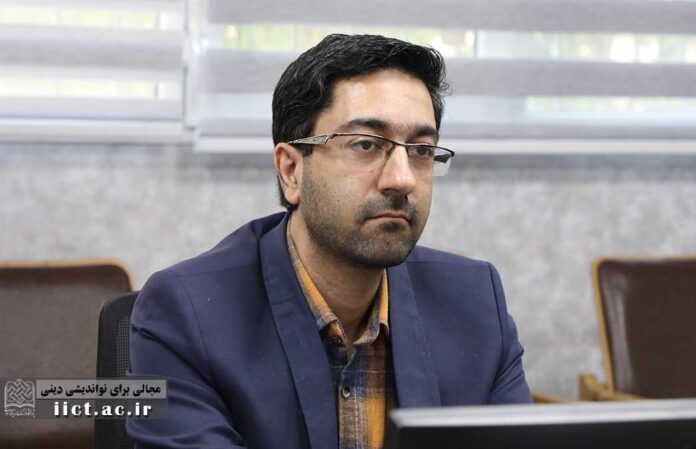According to the Public Relations Department of IICT, Mohammad Hassan Shahangi, head of the Institute’s Literature and Thought Group, discussed the book “His Blood; Imam Hussein (a) from the Perspective of Zainab (s)” with the Culture and Literature Group of Mehr News Agency.
The book ” His Blood ” is a creatively and literarily written book depicting Imam Hussein (a) through the narration of Zainab (s). The book covers seven main themes: the period before the Ashura incident, the martyrdom of Imam Hussein (a) at noon on Ashura, the burning of tents in the afternoon, the return of the captives to Kufa, the journey of the captives to Sham, the presence of the captives in Yazid’s palace, and the period after Imam Hussein (a).
Shahangi stated, “Undoubtedly, the most enduring event in human history that narrates the struggle between truth and falsehood is Karbala. According to Shia beliefs, the fervor of this tragic event will remain in the hearts of believers until the Day of Judgment and will never be forgotten. Ashura is a timeless and placeless incident. Although it occurred in a specific place and time, its impact spans all history and the entire world. The true secret of Ashura’s permanence lies in its epic and intellectual nature.”
He added, “Ashura is not just history; it is an identity, the identity of Shia. It embodies love, mysticism, heroism, and bravery. It carries both mourning and elegy as well as dignity and honor. This identity calls out to pure hearts to be messengers of justice, opposition to oppression, and resistance to tyranny. Therefore, it is not surprising that, unlike all other historical events, the passage of time has not dimmed Ashura’s memory. Instead, each year, its commemoration becomes more splendid.”
Shahangi further explained, “The significant event of Ashura, which combines reason and love and showcases the unity of these two concepts in the person of Imam Hussein (a), disproves all contentious disputes, transforming words into deeds. Ashura is a truth that can only be approached with heart, insight, and reflection. What other great hero in history can be found with such exceptional qualities?”
In response to a question about the importance of conveying the concepts of Ashura to the younger generation, he said, “This great event faces important historical questions among the youth that need addressing. It is crucial for today’s audience to understand what happened to Imam Hussein and his companions before Ashura, how the martyrdom occurred at noon on Ashura, the circumstances of the tent burning in the afternoon, the conditions of the captives on the way to Sham, the nature of their presence in Yazid’s palace, and the period after Imam Hussein (a).”
He continued, “Ashura is a movement that can instigate numerous revolutions, campaigns, and reformist actions. It motivates its devotees to stand against injustice and oppression, keeping the banner of God’s religion raised high. Such capacities lead us to conclude that only through elucidating the intellectual and personal layers of the Karbala heroes can this event be correctly reproduced in different times and places.”
In conclusion, he emphasized, “Amidst the false and artificial heroes presented to today’s audience, it is essential to question how much the heroic, legendary, and superhuman aspects of Imam Hussein (a) and his 72 loyal companions have been communicated to the youth. Is merely highlighting their martyrdom and tragic demise sufficient, or should we speak more about their bravery, dedication, strength, power, and unparalleled freedom? Clearly, primary historical texts have long addressed these themes, but what necessitates a renewed response is addressing the youth and adolescents of today with a timeless language. This language should complement history, utilizing literature, speech, belief, and emotion to reveal a glimpse of the immense tragedy of Karbala.”




